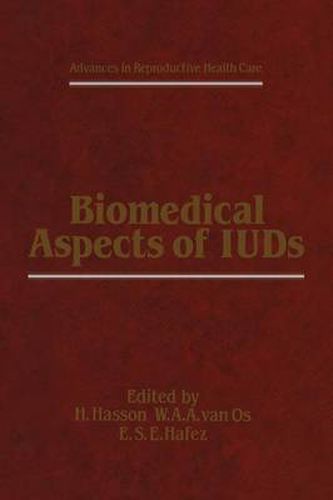Readings Newsletter
Become a Readings Member to make your shopping experience even easier.
Sign in or sign up for free!
You’re not far away from qualifying for FREE standard shipping within Australia
You’ve qualified for FREE standard shipping within Australia
The cart is loading…






This title is printed to order. This book may have been self-published. If so, we cannot guarantee the quality of the content. In the main most books will have gone through the editing process however some may not. We therefore suggest that you be aware of this before ordering this book. If in doubt check either the author or publisher’s details as we are unable to accept any returns unless they are faulty. Please contact us if you have any questions.
This volume contains a collection of papers based on presentations made at the Reproductive Health Care International Symposium held in Maui, Hawaii, USA, October 1982. The papers evaluate biologic interactions be tween intrauterine contraceptive devices and the host, examine the risks associated with the use of these devices and describe aspects of technical progress in the field. The contributing authors bring their knowledge and expertise from four corners of the world to the readers. The editors wish to express their appreciation to the authors for their valuable contributions, to Carolyn K. Osborn for helpful assistance in editing the manuscripts and to MTP Press for accurate preparation and fine presentation of the material. It is hoped that this volume will serve to expand knowledge and generate further interest among its readers in the dynamic and fascinating field of intrauterine contraception. April, 1984 H.M. Hasson, MD Chicago, Illinois, USA ix 1 Ultrastructure of the decidual response to a progesterone releasing IUD U.M. SPORNITZ. K.S. LUDWIG and M. MALL-HAEFELI INTRODUCTION The ever-increasing world-wide use of the IUD has prompted intensive research into the physiology of its contraceptive action. From these studies it has become clear that the alterations in morphology as well as in the physiological milieu produced by the IUD are manifold and differ greatly with the type of IUD used.
$9.00 standard shipping within Australia
FREE standard shipping within Australia for orders over $100.00
Express & International shipping calculated at checkout
This title is printed to order. This book may have been self-published. If so, we cannot guarantee the quality of the content. In the main most books will have gone through the editing process however some may not. We therefore suggest that you be aware of this before ordering this book. If in doubt check either the author or publisher’s details as we are unable to accept any returns unless they are faulty. Please contact us if you have any questions.
This volume contains a collection of papers based on presentations made at the Reproductive Health Care International Symposium held in Maui, Hawaii, USA, October 1982. The papers evaluate biologic interactions be tween intrauterine contraceptive devices and the host, examine the risks associated with the use of these devices and describe aspects of technical progress in the field. The contributing authors bring their knowledge and expertise from four corners of the world to the readers. The editors wish to express their appreciation to the authors for their valuable contributions, to Carolyn K. Osborn for helpful assistance in editing the manuscripts and to MTP Press for accurate preparation and fine presentation of the material. It is hoped that this volume will serve to expand knowledge and generate further interest among its readers in the dynamic and fascinating field of intrauterine contraception. April, 1984 H.M. Hasson, MD Chicago, Illinois, USA ix 1 Ultrastructure of the decidual response to a progesterone releasing IUD U.M. SPORNITZ. K.S. LUDWIG and M. MALL-HAEFELI INTRODUCTION The ever-increasing world-wide use of the IUD has prompted intensive research into the physiology of its contraceptive action. From these studies it has become clear that the alterations in morphology as well as in the physiological milieu produced by the IUD are manifold and differ greatly with the type of IUD used.